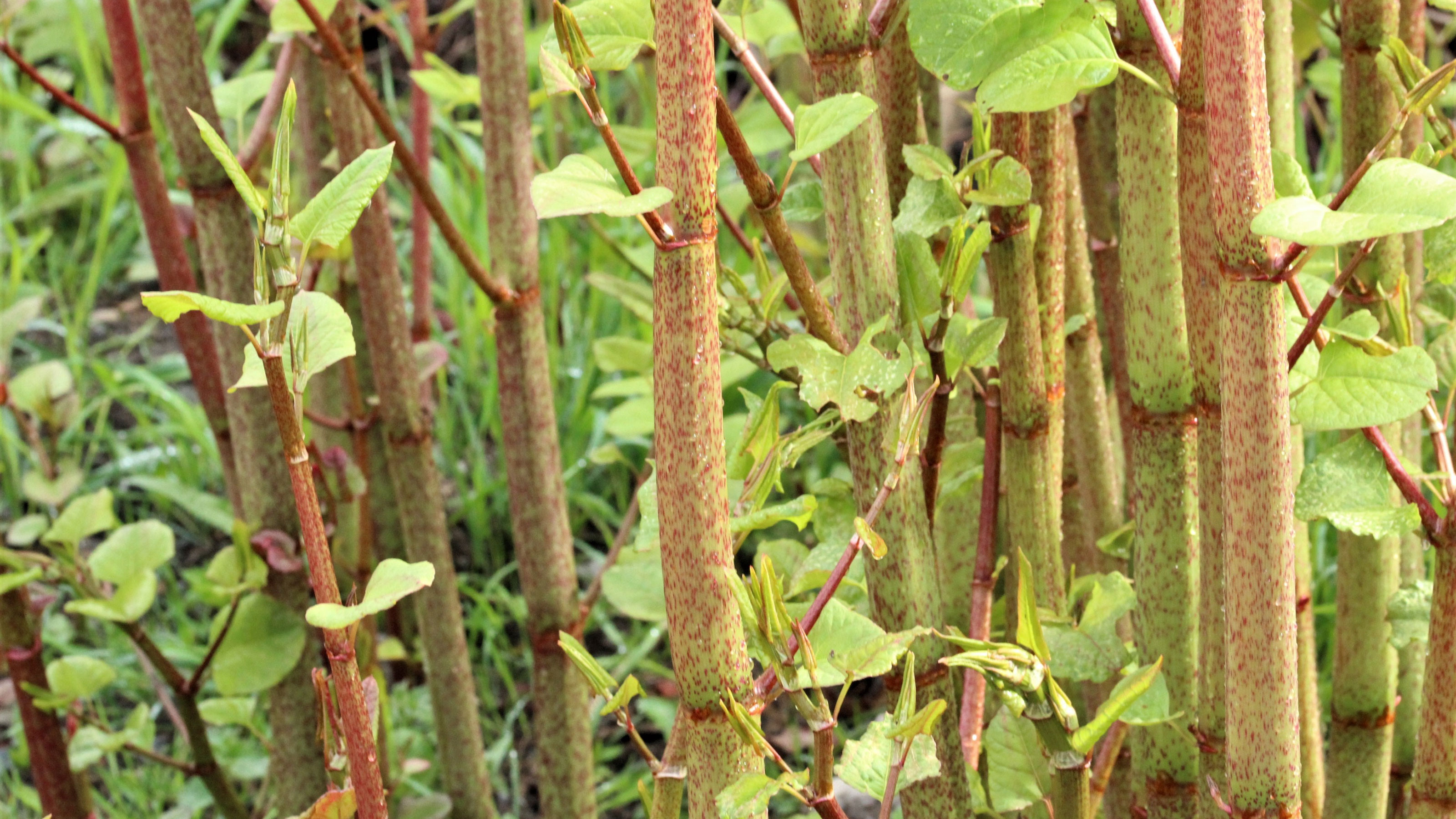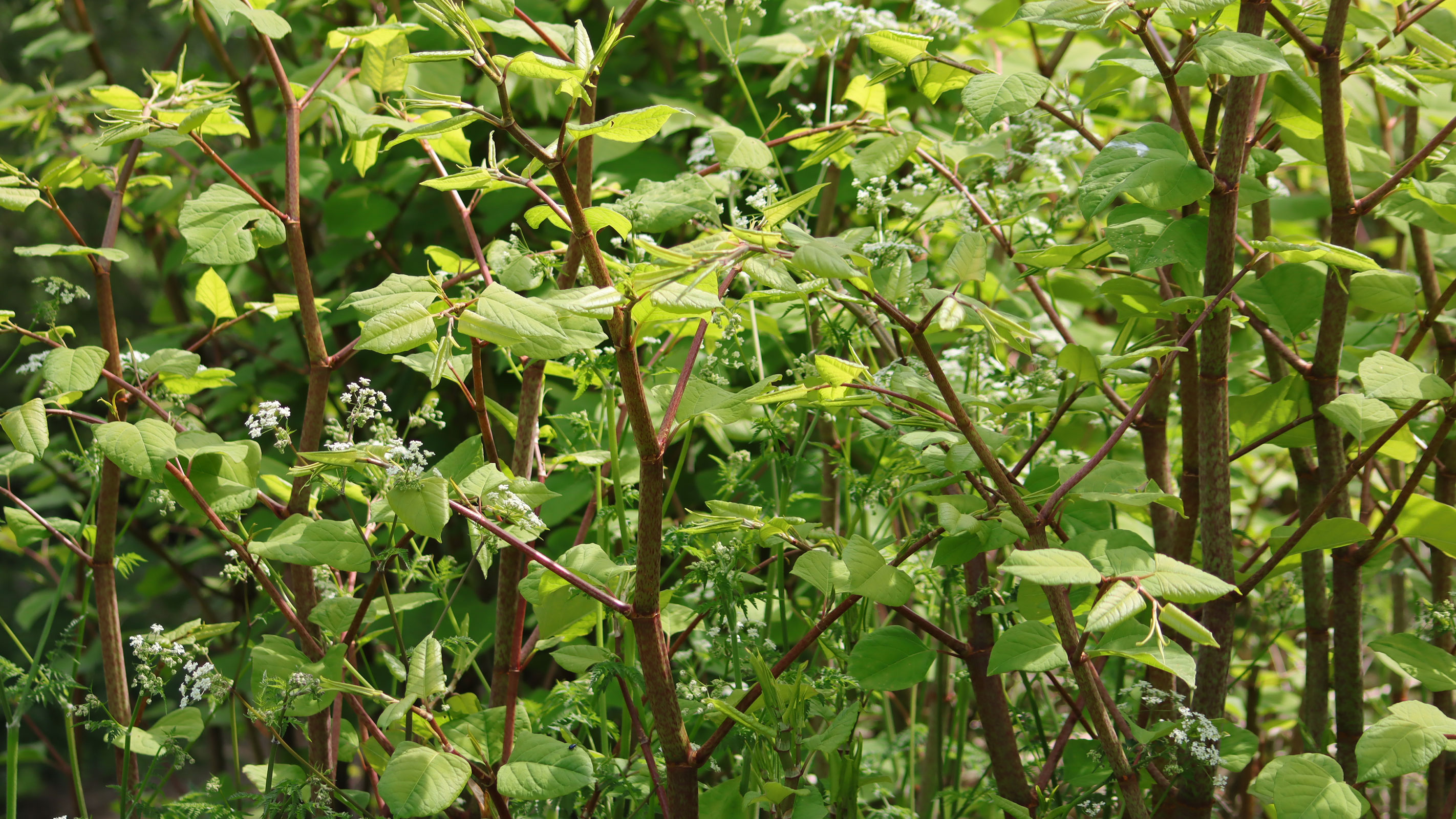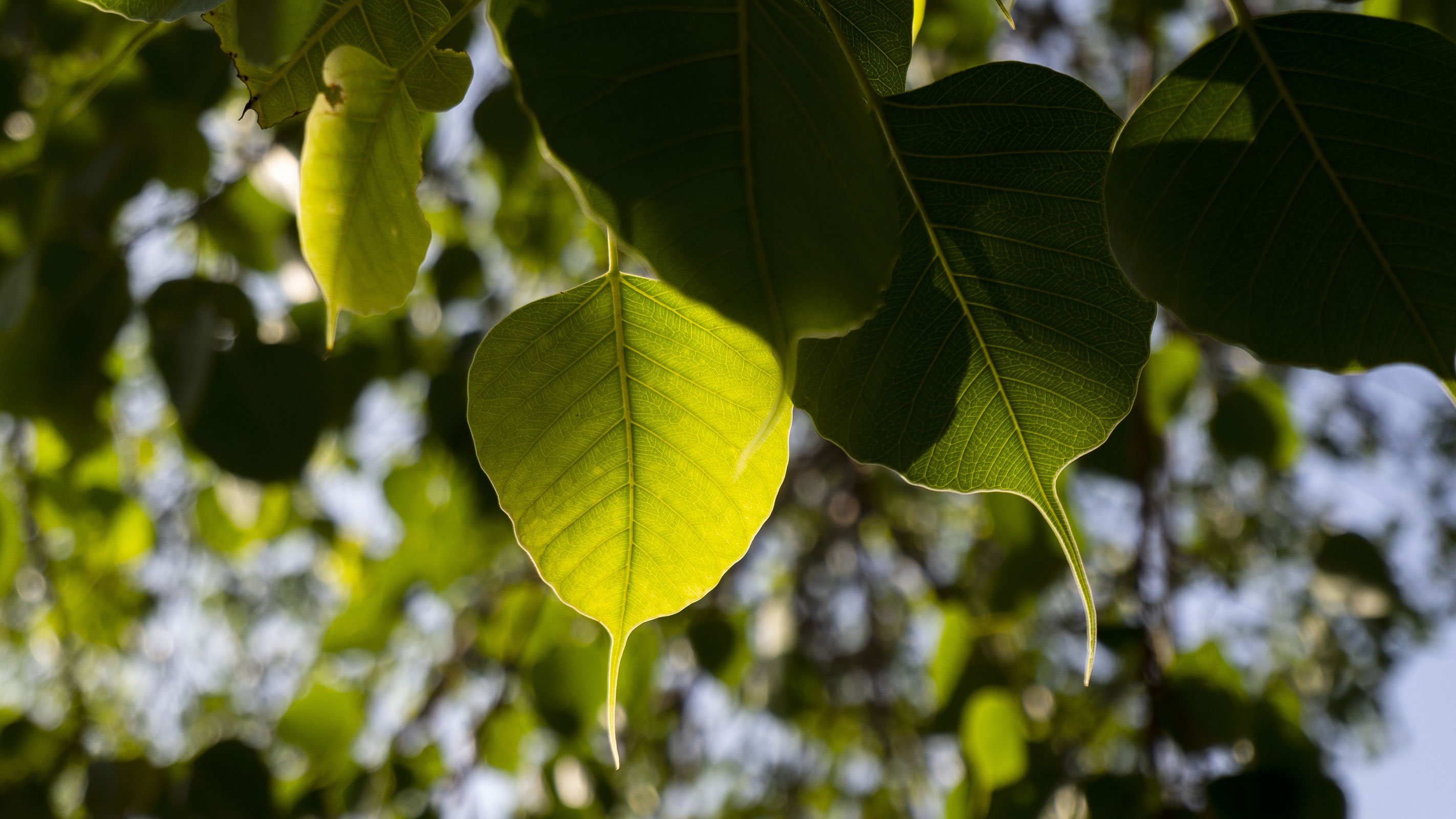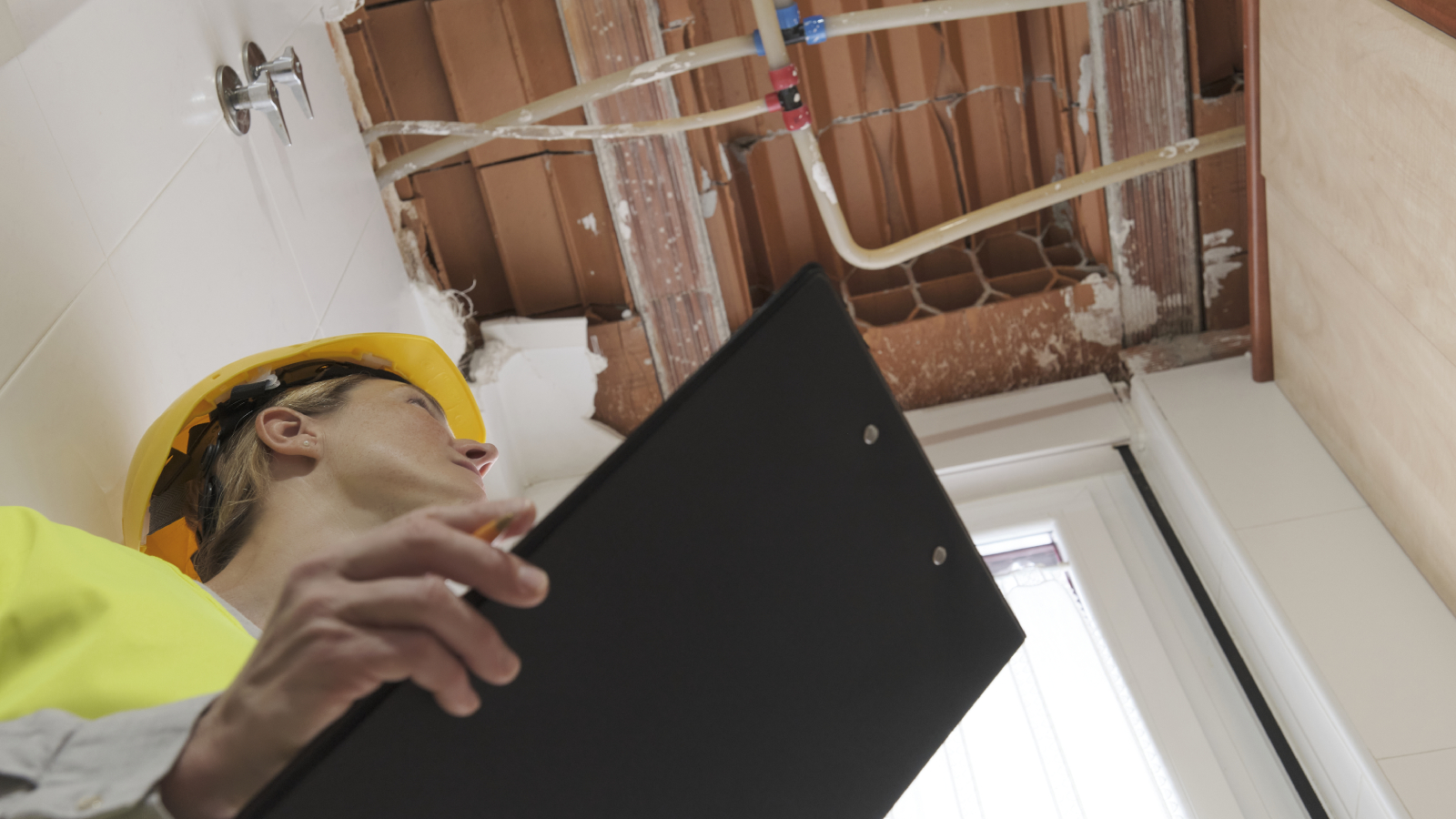Japanese knotweed identification: Do you know how to spot this plant in a garden?
Get to grips with Japanese knotweed identification with our handy expert guide to ensure you know exactly what you are dealing with and how to proceed

Becoming an expert in Japanese knotweed identification is essential if you want to ensure it doesn't take over your garden or cause damage to your home.
And if you suspect you may have found Japanese knotweed growing in or near your garden, it's important to understand what it looks like, why it is a problem and the process of Japanese knotweed removal in order to get rid of it fast — before it inflicts damage.
“We estimate that approximately 5% of homes in the UK are affected by Japanese knotweed, either directly or indirectly (i.e. neighbouring an affected property), impacting their value by an average of 5-10%," warns Nic Seal, founder of invasive plant specialists Environet.
Here, we explain what Japanese knotweed looks like at different times of the year and point you in the right direction when it comes to getting rid of it for good.
Japanese knotweed identification explained
It is surprisingly easy to mistake Japanese knotweed for several other plants, yet this is one of the most invasive and potentially damaging species plaguing gardens in the UK so it is really important to know when you have spotted it.
So, just what does Japanese knotweed look like? A common confusion can be when it comes to telling whether you have found bindweed or knotweed — but the two are actually very different.
"The appearance of Japanese knotweed changes with the seasons, so it is important to note that when you are checking for Japanese knotweed, you also need to bear in mind the time of year," explains Nic Seal. "Japanese knotweed is most easily identified during the spring and summer months."
Bring your dream home to life with expert advice, how to guides and design inspiration. Sign up for our newsletter and get two free tickets to a Homebuilding & Renovating Show near you.
The most obvious red flags to be on the lookout for include:
- Reddish shoots (they look a little like asparagus) that make an appearance in the spring
- Shovel/shield-shaped green leaves
- Stems that resemble bamboo but that have a speckled green and dark mauve colour
- Frothy clusters of small cream flowers that come out in late summer

What is Japanese knotweed?
Before we get into how to identify Japanese knotweed at different times of year, we'll take a quick look at what it is.
"Japanese knotweed (Reynoutria japonica) is a herbaceous, perennial plant that is widely distributed across the UK," explains Environet's Nic Seal. “It is part of the Polygonaceae family, which contains some of the most prolific weed species on the planet.
There’s also Giant knotweed which is taller and has bigger leaves, and Bohemian knotweed, a hybrid cross, which resembles the characteristics of both Japanese and Giant knotweed."
Why is Japanese knotweed a problem?
The reason it is so important to spot Japanese knotweed quickly is because this is an extremely fast-growing and invasive plant.
If left to its own devices, it will find its way into weak spots in structures, cause damage to hard surfaces, such as patios and pathways, block drains and even make existing cracks in brickwork worse.
"We often see cases of damage to hard surfaces such as patios, asphalt and drains," says Nic Seal. "Although it is a myth that knotweed can grow through solid concrete, it certainly has no problem exploiting the smallest of gaps and weaknesses, eventually causing real damage."
In addition, its presence on your property could affect your ability to get a mortgage or sell it on.
"It is widely acknowledged that the presence of Japanese knotweed on a property can negatively impact its value and saleability," says Nic. "Thankfully, many lenders take a pragmatic approach and with the right treatment programme and guarantee in place, you should have no problem selling a property affected by knotweed."
What does Japanese knotweed look like in summer?
During July and August, Japanese knotweed will be in full growth.
"Mature plants normally reach their full height of 2 – 2.5m by the end of May, with their distinct shield shape, lime green leaves fully open," details Nic Seal. "Canes emerge from distinct crowns in the ground, and are tall with purple/pink speckles. In late July, leaves become darker green and clusters of creamy white flowers start to appear."

What does Japanese knotweed look like in autumn?
Although Japanese knotweed dies back in autumn, it is still possible to identify it.
"As the weather gets cooler and light levels drop, Japanese knotweed leaves start to turn yellow and then eventually brown, before falling off" says Nic Seal. "The canes of the plant gradually turn brown and brittle."
What does Japanese knotweed look like in winter?
Although it is harder to spot Japanese knotweed during the winter, there are still telltale signs to be aware of, including brown canes sticking out of the ground, and the rhubarb-like crowns on the surface of the soil.
"If you are unsure, we offer a free Japanese knotweed identification service. And if as a buyer or seller you need certainty, we can determine whether a property is affected and provide a warranty to satisfy lenders," points out Nic Seal.
What does Japanese knotweed look like in spring?
It can be pretty difficult to spot Japanese knotweed in spring — particularly in March and April as it is so small.
"Between late February and April, new Japanese knotweed appears as asparagus-like shoots," says Nic Seal. "These start off as reddish buds that transform into shoots and can grow at a rate of a couple of centimetres a day. On warm April days, more mature plants can grow at a rate of 10cm a day.
"As the fleshy shoots get taller, they sprout bright lime green leaves with purplish or pink veins."
What is Bohemian knotweed?
Bohemian knotweed could be far more troublesome than Japanese knotweed as, unlike it, this plant can produce fertile seeds that allow it to spread faster.
"Bohemian knotweed (Fallopia Bohemica syn. Reynoutria x bohemica) is a rare hybrid of the highly invasive Japanese knotweed and its larger cousin Giant knotweed," explains Nic Seal. "Spread of the plant by seed is relatively uncommon, with the main distribution of plants attributed to vegetative spread via the rhizome system as with Japanese knotweed.
"As well as outcompeting native species, its vast root system has the potential to cause damage to property, including patios and driveways, which is seldom covered by buildings insurance, meaning the plant should be treated or removed as quickly as possible."

What does Bohemian knotweed look like?
How can you tell the difference between Japanese knotweed and Bohemian knotweed? If you suspect you have the latter growing in your garden, be on high alert for the following:
- Heart-shaped or square ended leaves
- Leaves have stubby hairs on the underside
- Larger leaves than Japanese knotweed
- Plants that grow 2-3m in height
- Bambooesque stalks with a rusty brown tinge that often remain in the autumn and winter even after the leaves have died back
- Creamy or greenish clusters of little flowers
Natasha was Homebuilding & Renovating’s Associate Content Editor and was a member of the Homebuilding team for over two decades. In her role on Homebuilding & Renovating she imparted her knowledge on a wide range of renovation topics, from window condensation to renovating bathrooms, to removing walls and adding an extension. She continues to write for Homebuilding on these topics, and more. An experienced journalist and renovation expert, she also writes for a number of other homes titles, including Homes & Gardens and Ideal Homes. Over the years Natasha has renovated and carried out a side extension to a Victorian terrace. She is currently living in the rural Edwardian cottage she renovated and extended on a largely DIY basis, living on site for the duration of the project.

